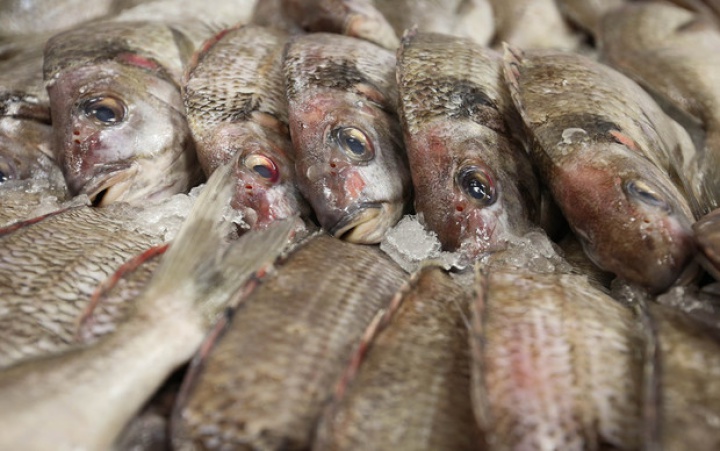A retired marine biologist believes tarakihi, one of
this country's most popular fish, is certainly in decline,
but numbers can be turned around.

Tarakihi at Pak n Save Kilbirnie. Photo: RNZ / Alexander Robertson
There are claims tarakihi may soon be fished-out unless further reductions in the catch allowed, are made.
Last year, it was cut by 20 percent and a further cut of up to 35 percent is possible.
A decision on that is likely from the government in September, before the October fishing season gets underway.
Marine biologist Rick Boyd said information on population numbers is obtained using data gathered and it is normally reliable.
He said while tarakihi numbers are dropping and are at risk, we can not necessarily conclude that the species is under threat.
"I classify threats as things like climate change, which we have very little ability to influence, and risks are things like fishing, where the fish is related to the quality of the data you have, and the uncertainties around stock assessments and estimates."
He said the data suggests there is a need to reduce catch numbers.
Mr Boyd said the typical argument that arises is about how long should it take to achieve an increase in the stock size to a better, safer level.
"So very often you have those who operate in the fisheries, the commercial industry, say we want to cut less and have a longer rebuild time, and others will say cut it now, so that stock will rebuild to a safe level in a shorter period of time."
He said the target level is usually to have a biomass, a total abundance of fish, at about 40 percent of what was there before a fishery.
"That's a virgin biomass.
"You fish the stock down to a point where you have somewhat younger, faster growing fish, so you get more turnover, production in the stock."
Mr Boyd said this is like a forest that you do not let get too old before it is harvested.



 Ian Powell: Gisborne Hospital Senior Doctors Strike Highlights Important Health System Issues
Ian Powell: Gisborne Hospital Senior Doctors Strike Highlights Important Health System Issues Keith Rankin: Who, Neither Politician Nor Monarch, Executed 100,000 Civilians In A Single Night?
Keith Rankin: Who, Neither Politician Nor Monarch, Executed 100,000 Civilians In A Single Night? Eugene Doyle: Writing In The Time Of Genocide
Eugene Doyle: Writing In The Time Of Genocide Gordon Campbell: On Wealth Taxes And Capital Flight
Gordon Campbell: On Wealth Taxes And Capital Flight Ian Powell: Why New Zealand Should Recognise Palestine
Ian Powell: Why New Zealand Should Recognise Palestine Binoy Kampmark: Squabbling Siblings - India, Pakistan And Operation Sindoor
Binoy Kampmark: Squabbling Siblings - India, Pakistan And Operation Sindoor